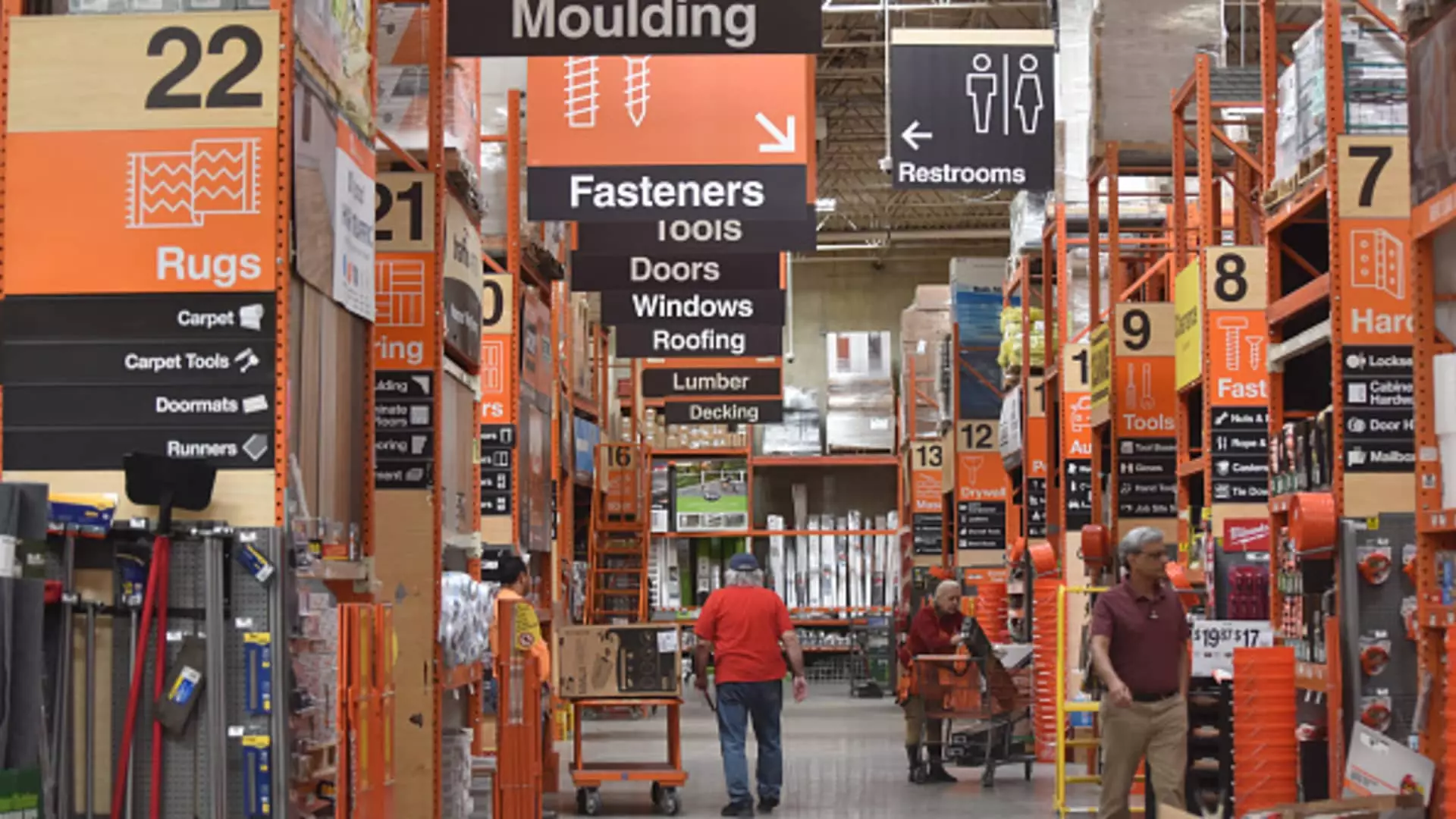On the surface, Home Depot’s recent quarterly report reveals a landscape marked by both challenges and glimmers of hope. For the fiscal quarter ending October 27, the retailer posted a notable 6.6% year-over-year increase in net sales, reaching an impressive $40.2 billion—exceeding the forecast of $39.3 billion set forth by LSEG. This surge, while welcome, contrasts with the adjusted earnings per share (EPS), which witnessed a slight drop of 1.8%, landing at $3.78. However, this figure still surpassed analysts’ expectations of $3.64, indicating that the performance was better than many investors had braced for.
It is essential to analyze these results within the context of broader economic conditions. Same-store sales dipped 1.3% across the board, with U.S. stores seeing a decrease of 1.2% compared to the previous year’s figures. While these declines are disconcerting, they are notably less severe than the anticipated declines of 3.1% and 2.9%, respectively. This creates a narrative where Home Depot is not entirely devoid of demand, despite the ongoing pressure from high interest rates and persistent economic trepidation.
In a nuanced examination of recent months, it is evident that Home Depot is navigating a tumultuous retail environment. The twin forces of soaring interest rates and macroeconomic uncertainties have placed significant strain on consumer spending habits, particularly affecting high-ticket remodeling projects that are traditionally vital to the company’s profitability. Nonetheless, the company’s leaders have spotted opportunities amid these adversities, citing “green shoots” indicative of potential recovery in areas like larger renovation projects. Rising home equity levels and falling rates on home equity lines of credit may serve as crucial catalysts for recovery.
CEO Edward Decker’s observations regarding weather’s impact on consumer engagement offer an interesting angle. The summer storms and hurricanes seemed to generate demand that the company capitalized on, particularly in its seasonal and outdoor offerings. The sequential uptick in sales, culminating in a 1.4% increase in October, bolsters the argument that as broader conditions normalize, Home Depot may witness improved performance in the months to come.
In a move that has rekindled investor enthusiasm, Home Depot raised its guidance for future sales, anticipating a total sales increase of 4%—an upgrade from previous expectations of 2.5% to 3.5%. This optimistic projection signals confidence in the company’s strategic positioning and operational capabilities as it steers through the current market conditions. Additionally, the expectations of a 2.5% decline in same-store sales, revised upwards from a previously anticipated decline of 3% to 4%, showcases a recognized potential for stabilization.
With further product growth in categories such as power outdoor garden supplies and indoor painting materials, the company has steered focus towards segments performing above average, bolstering its resilience as it adapts to evolving consumer preferences. The incorporation of SRS Distribution, which generated roughly $2.9 billion in sales during the third quarter, highlights Home Depot’s commitment to diversifying its portfolio through strategic acquisitions, potentially enhancing its competitive edge against rivals, including Lowe’s.
As stock analysts evaluate the prospects for Home Depot heading into 2025, sentiment appears to lean towards cautious optimism. The company’s position is underpinned by a belief that relieving interest rates can stimulate the housing market, ultimately restoring consumer confidence and catalyzing increased activity within home improvement sectors. With management demonstrating an ability to navigate the current obstacles efficiently, investors are encouraged to maintain positions or selectively build on their investments.
While Home Depot is not immune to the current headwinds faced by the retail environment, the recent quarterly results signal resilience and strategic foresight. The enhancement of its future outlook reflects a commitment to adaptation and growth. For stakeholders, this pivotal period serves as a reminder of the importance of patience and comprehensive analysis as they navigate potential opportunities for investment in this iconic home improvement giant. The path ahead may have its challenges, but the foundational elements for recovery and growth are increasingly visible.

